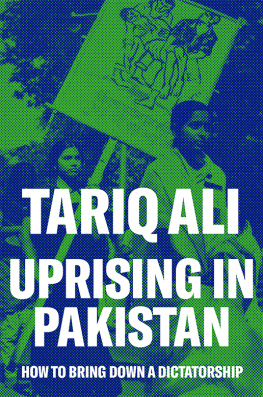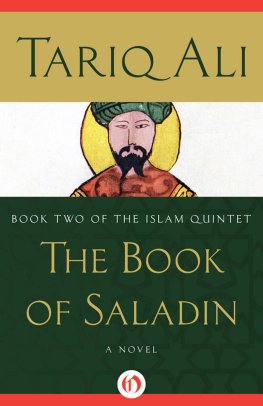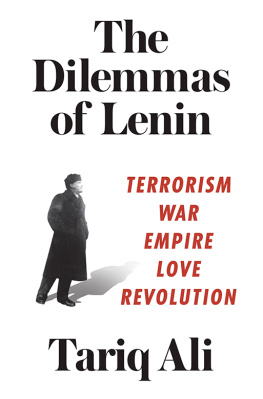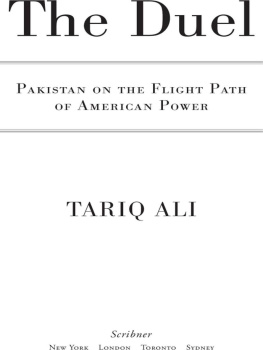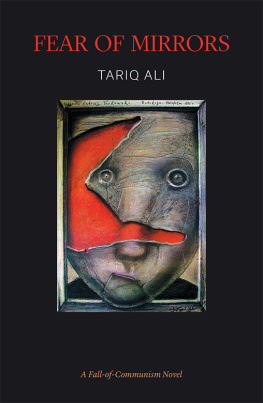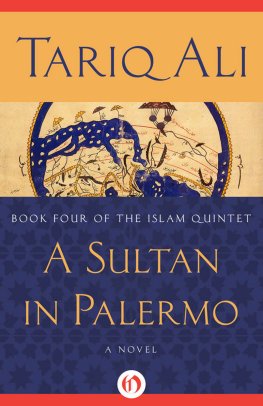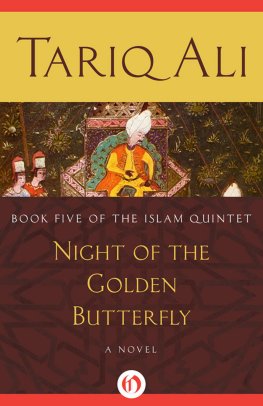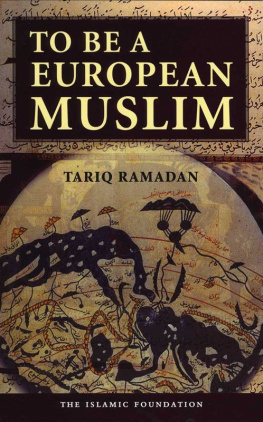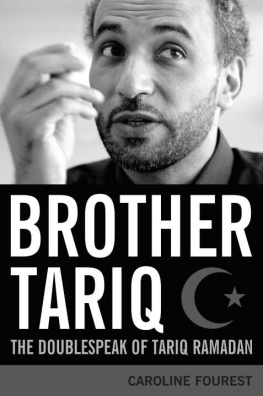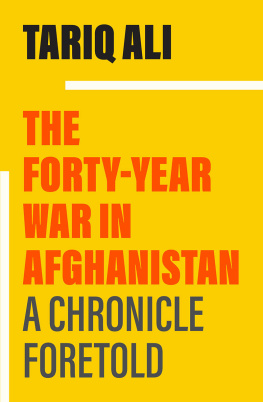Tariq Ali - Uprising in Pakistan - How to Bring Down a Dictatorship
Here you can read online Tariq Ali - Uprising in Pakistan - How to Bring Down a Dictatorship full text of the book (entire story) in english for free. Download pdf and epub, get meaning, cover and reviews about this ebook. year: 2018, publisher: Verso Books, genre: Politics. Description of the work, (preface) as well as reviews are available. Best literature library LitArk.com created for fans of good reading and offers a wide selection of genres:
Romance novel
Science fiction
Adventure
Detective
Science
History
Home and family
Prose
Art
Politics
Computer
Non-fiction
Religion
Business
Children
Humor
Choose a favorite category and find really read worthwhile books. Enjoy immersion in the world of imagination, feel the emotions of the characters or learn something new for yourself, make an fascinating discovery.
Uprising in Pakistan - How to Bring Down a Dictatorship: summary, description and annotation
We offer to read an annotation, description, summary or preface (depends on what the author of the book "Uprising in Pakistan - How to Bring Down a Dictatorship" wrote himself). If you haven't found the necessary information about the book — write in the comments, we will try to find it.
Uprising in Pakistan - How to Bring Down a Dictatorship — read online for free the complete book (whole text) full work
Below is the text of the book, divided by pages. System saving the place of the last page read, allows you to conveniently read the book "Uprising in Pakistan - How to Bring Down a Dictatorship" online for free, without having to search again every time where you left off. Put a bookmark, and you can go to the page where you finished reading at any time.
Font size:
Interval:
Bookmark:

UPRISING IN PAKISTAN
By the same author
NON-FICTION
Pakistan: Military Rule or Peoples Power (1970)
1968 and After: Inside the Revolution (1978)
Can Pakistan Survive? (1982)
Revolution from Above: Where Is the Soviet Union Going? (1988)
The Clash of Fundamentalisms (2002)
The Nehrus and the Gandhis (new edition 2005)
The Obama Syndrome: Surrender at Home, War Abroad (2010)
The Dilemmas of Lenin: Terrorism, War, Empire, Love, Revolution (2017)
The Extreme Centre: A Second Warning (2018)
FICTION
The Islam Quintet
Shadows of the Pomegranate Tree (1992)
The Book of Saladin (1998)
The Stone Woman (1999)
The Sultan of Palermo (2005)
Night of the Golden Butterfly (2010)
The Fall-of-Communism Trilogy
Redemption (1991)
Fear of Mirrors (1998)
A DICTATORSHIP
Tariq Ali

First published by Verso 2018
The chapters of this book first appeared in Pakistan: Military Rule or
Peoples Power? by Tariq Ali, published by Jonathan Cape 1970
Tariq Ali 2018
All rights reserved
The moral rights of the author have been asserted
1 3 5 7 9 10 8 6 4 2
Verso
UK: 6 Meard Street, London W1F 0EG
US: 20 Jay Street, Suite 1010, Brooklyn, NY 11201
versobooks.com
Verso is the imprint of New Left Books
ISBN-13: 978-1-78663-537-2
ISBN-13: 978-1-78663-539-6 (US EBK)
ISBN-13: 978-1-78663-538-9 (UK EBK)
British Library Cataloguing in Publication Data
A catalogue record for this book is available from the British Library
Library of Congress Cataloging-in-Publication Data
A catalog record for this book is available from the Library of Congress
Typeset in Garamond Pro by MJ&N Gavan, Truro, Cornwall
Printed in the UK by CPI Group (UK) Ltd, Croydon, CR0 4YY
Contents
When Pakistan arose out of the tumult of Independence and Partition in 1947, it was a creature bearing two vast geographical wings East Pakistan and West Pakistan separated by a thousand miles of Indian territory, and one much weightier than the other. The majority of the population (60 per cent) lived in the East, but the bulk of the army and the civil service a colonial inheritance were in the West. From the very beginning it was the civil service that dominated the country. It quickly became apparent that this big misshapen bird was a dodo and would never fly. The reason for this lies largely with the western elite, which treated the eastern wing as a semi-colony.
Might a shared language allow the two wings to work together? To that end, it was decided, less than a year after Independence, that Urdu would be the mother tongue of all future Pakistanis. At the time, Urdu was the language of the literary elite and the Muslim refugees from India. In West Pakistan, it had sat alongside four other indigenous languages: Punjabi, Pashto, Sindhi and Balochi. Henceforth, it was decreed, the Punjabis and the Bengalis would speak Urdu.
Nobody asked why or pointed out that the supreme leader who had created this strange bird, Muhammad Ali Jinnah, barely knew a word of Urdu himself. English was his favoured tongue. At best, he managed a little pidgin Urdu. Quite a few British civil servants and officers spoke it better than he did. Nonetheless Urdu was imposed without any opposition in the Punjabi heartland of the West wing.
In contrast, East Pakistan consisted largely of Bengalis, who were proud of their own refined language, known locally as Bangla, and a literature that was over a thousand years old. It was foolish of the Western overlords to announce that Bangla would take second place to Urdu. When the frail supreme leader arrived in Dhaka in 1948, he was given a reception that shook him to the core: tens of thousands of angry demonstrators, spearheaded by students, hurling stones at the motorcade and chanting anti-Jinnah slogans, made it clear that nobody could rob them of their language. The police opened fire, and some students were killed, later to be commemorated with a language martyrs memorial.
Pakistan had yet to celebrate its first anniversary. Jinnah did not stay too long in Dhaka, poor man. The massacres that accompanied Partition in 1947 had taken a heavy toll on him. After visiting a refugee camp with Mian Iftikharuddin, the Minister for the Rehabilitation of Refugees in the Punjab, a shaken Jinnah confessed, I had no idea it would be like this. What he had really wanted was a smaller version of India with Muslims as the dominant community, a utopia that was never to be, though a sizeable section of Bengali Hindus stayed on in East Pakistan. A few did so in Sind as well. But these were exceptions. The Punjab and the North-West Frontier Province had been through a brutal process of ethnic cleansing.
The 1948 ruling lasted five years, after which time Bangla and Urdu were granted equal status with Urdu as state languages. What had happened was a clear warning to the powers in West Pakistan. Long-term coexistence between the two wings could only happen on the basis of complete equality. Power sharing and economic development had to go hand in hand.
Needless to say, the very opposite happened. Economically, East Pakistan was treated like a colony with most of the foreign currency earned from jute being used for investment projects and lining pockets in the West. Politically, the provincial elections of 1954 led to the formation of a radical United Front in the Eastern wing committed to serious land reform and withdrawal from the defence and security pacts signed with the United States. This development caused panic in Washington. The US feared that a general election in the country as a whole might lead to a government willing to embrace non-alignment on the Indian model.
This Cold War fear triggered the first of many military coups in Pakistan, this one with the explicit aim of preventing the first general election, scheduled for April 1959. In October 1958 the army seized power. As far as we are concerned, General Ayub Khan told his first cabinet meeting, there is only one embassy in our country. That is the American Embassy.
Khan ruled for ten years, during which the disparities between the two wings grew. Twenty-two families dominated the economy, all of them from West Pakistan. I have narrated this history in Pakistan: Military Rule or Peoples Power?, which I wrote in 1969 after participating in the latest phase of the uprising.changes. I have left them largely untouched to preserve both authenticity and tone.
The 1968 uprising was an eruption of hope for the entire country. For the first time ever, East and West Pakistan were united from below in a common struggle against a military dictatorship. The spark that lit the fire came from the most politically backward section of the country, not from its intellectual capitals, Dhaka and Karachi. The chronology and the maps published in this book highlight how the fire spread.
From the outset, religious groups and their student appendages found themselves marginalized. In contrast, two political currents came to the aid of the dictatorship in both wings: the Jamaat-i-Islami and the major Maoist groups. The former saw the leaders of the uprising as a collection of radicals, socialists and communists hostile to politically organized religion, which was true. The Maoists, on the other hand, followed the Beijing line: Chinese state interests required that Field Marshal Ayub maintain a stable regime, one characterized by China as anti-imperialist, a description that made Ayubs senior advisers roar with laughter.
Font size:
Interval:
Bookmark:
Similar books «Uprising in Pakistan - How to Bring Down a Dictatorship»
Look at similar books to Uprising in Pakistan - How to Bring Down a Dictatorship. We have selected literature similar in name and meaning in the hope of providing readers with more options to find new, interesting, not yet read works.
Discussion, reviews of the book Uprising in Pakistan - How to Bring Down a Dictatorship and just readers' own opinions. Leave your comments, write what you think about the work, its meaning or the main characters. Specify what exactly you liked and what you didn't like, and why you think so.

